Nobly reasonable? Infinitely facultative? Angelic and Godly?!
Wow! What a piece of work was Shakespeare!
But was he a genius? Was Bach, Da Vinci, or Einstein?
What do we mean by use of the word genius?
In this, the first of four posts, the intention is to again push off from the comfort and normalcy of home port. This time to explore the most slippery o’eels! Our journey begins in a deep contextual fog, of historical, theistic, and social themes; tricky navigation to be sure! Once out of the ‘fog’, our objective, or bias, will be to explore the cultural islands Intelligence, Creativity, and Mental illness, and to interrelate them via cellular biology generally, and astroglial function specifically.
The subject matter is seemingly impossible; a vast ocean of reported (known), unreported (unknown), and living (tenacious and malleable) ideas. A rather less than more reliable volume! Aware of the bias – of our direction – mediated intentionally by sails, rudder, and navigator, and as much again, and more, without intent, by swells and gales and monsters unknown…
Qui_vive ?
Deep cultural time
The word genius is derived from the Latin gigno, from the Ancient Greek γίγνομαι (gígnomai, “to come into being, to be born, to take place”). Oddly, the word genius is also recognized as a Romanized version of the Arabic jinni or djinni (“hidden from sight”), from which is derived majnūn (“one whose intellect is hidden”, “mad”). Also, the pre-Islamic jinnaye (“good and rewarding gods”). A sentiment similar to that apprehended by pangan animism.
The jinn or djinn are Arabian mythological creatures who inhabit an unseen world beyond the known universe. Apparently, in the Quran, jinn are composed of a smokeless, scorching fire, and in the Torah (Christian “Old Testament”), as seraphim and cherubim (“burning/fiery ones”). The jinn, humans and angels are said to make up the three sapient creations of God. Like humans, the jinn have free will note A, and so may have a good, evil, or neutral disposition. The latter, mischievous or evil spirits were called shaytan jinn, and are also described as demons. Interestingly, phenomena that in ancient times were thought to result from possession by a shaytan, are in modernity defined as psychosis, schizotypy, or outright schizophrenia. All as stigmatizing now as they were a millennium ago, during the intellectual darkness, indeed exorcism, of the middle ages.
Closely related, in form and function, to the jinn, seraphim and cherubim, are the Karabu, Shedu and Lammasu of Assyria, Babylon and Phoenicia, respectively. All are depicted as sapient hybrid animals, varyingly described as:
– the likeness of four living creatures;
– each with four faces (the face of a man, the face of a lion on the right side, the face of an ox on the left side, and the face of an eagle) and four wings, with straight feet with a sole like the sole of a calf’s foot, and hands of a man under their wings;
– six-winged beings that fly around the Throne of God crying “holy, holy, holy”;
– a lion or bull with eagles’ wings and a human face;
– having a king’s head, a bull’s body, and an eagle’s wings;
– human-headed winged lion (Sphinx);
– eagle-headed winged lion (Griffin).
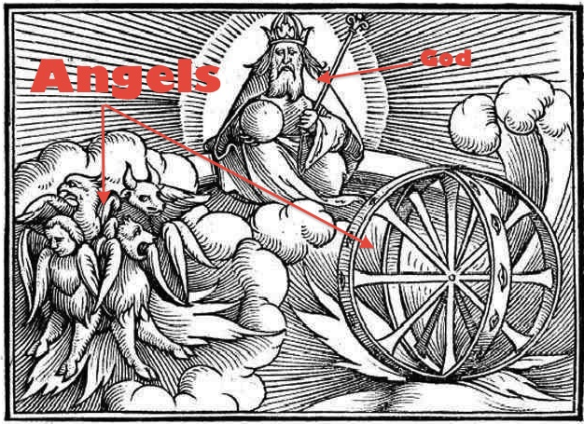 |
| Ezekiel’s vision – the marking of this image is incorrect. According to the literature, the two objects labeled “Angels” are cherubs |
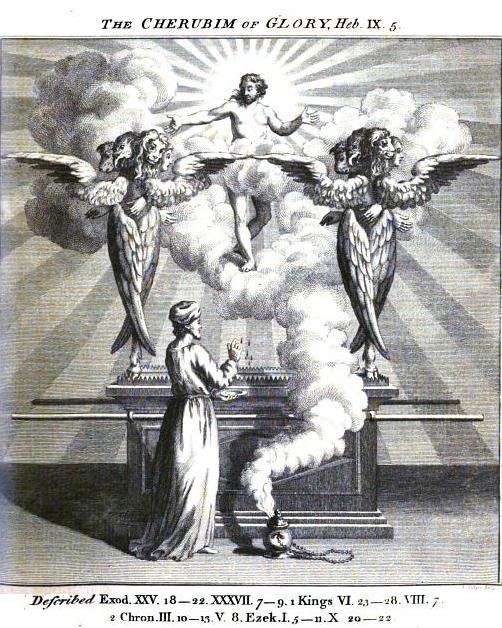 |
| Another representation of cherubs flying with the throne of God |
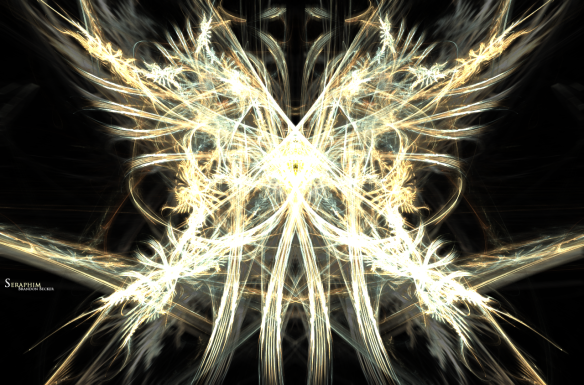 |
| A representation of a Seraph |
 |
| A pair of Lamassu |
 |
| Shedu |
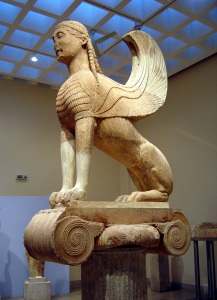 |
| Sphinx |
Interestingly, all of these fantastical creatures are described, almost exclusively, as powerful protective deities. For example, cherubim first appear in the Christian bible, in the Garden of Eden, as guards of the way to the Tree of life – possibly also the Tree of knowledge.
Classical and Enlightened soles
Animism represents a unity of spirit and material. Thus, in pagan antiquity, souls or spirits were not restricted to the human condition, but were also intrinsic to other animals, as well as plants, rocks, mountains, rivers, even thunder, wind, shadows, the sun, the moon and planets, etc… In his treaties on the nature of living things, “De Anima“, Aristotle pointed to the soul as the form and essence of a living thing. Thus the soul was assumed not to be a distinct substance from the body, and a body without a soul was unintelligible.
For love of empire, all good Romans worshiped the genius of Rome – the divine power protecting the Roman empire, Rome itself, and its heroic leaders and emperors. Likewise, the genius of a family, or house, was a protector and guide, an inspiring supernatural spirit which took care of house and family, and was the object of worship.1
Early in the 17th century, believing that a divine spirit had revealed new philosophies to him, Descartes suggested that the mind, spirit, or soul, is composed of a nonphysical substance, which he identified with consciousness and self-awareness. Unlike Aristotle, Descartes distinguished these spiritual aspects from a physical (material) brain. Hence, the dualism in modem philosophy of mind, and the resulting mind-body problem. Substance dualism is famously defended by Descartes’ “Je pense, donc je suis”, arguing that the mental substance can exist outside of the body and that the body cannot think. This philosophical stance, a belief held almost ubiquitously in modern culture, has allowed for the conception of artificial intelligence, hypothetically assumed to come into existence as a product of machine mediated computation of abstract (nonphysical) algorithms.
Late in the 18th century, expanding upon a theme related to substance dualism, Emmanuel Kant argued that experience is structured by the mind. He had published “Critique of Pure Reason” in response to the philosophical rift that had developed between empiricists – who believe that knowledge is fundamentally rooted in sensory experience, and rationalists – who believe that knowledge is fundamentally rooted in reasoning. In attempting to resolve the issue, Kant leaned toward the latter, a priori knowledge and reasoning. He suggested that the mind comprises necessary structures the function of which is to internalize the physical sensations, which are comprehended via synthesis with reasoned structures. It is this understanding of mental primacy in comprehension and conceptualization that gives way to what he called anshcauung, which we may call intuition, imagination, visualization, or insight.
Arthur Miller (2000) has identified this concept in his exploration of the role of insight in the sciences. In particular, Miller focuses upon Kantian anshcauung and anschaulichkeit (“visualizability”) in physics, proposing that “Anschaulichkeit refers to properties of an object, which exist whether or not we look at it or make measurements on it.” And that “anschaulichkeit is immediately given to the perceptions or what is readily graspable in the anschauung.” Furthermore, anshcauung is raised up from anschaulichkeit, and “visual imagery” (anschaulichkeit) is inferior to visualization (anshcauung).2 It is possibly this Kantian epistemic quagmire that has frightened so many quantum physicists into a strictly calculating corner, from which one often hears comments such as Don’t look for meaning, just do the math and you’ll get the right answer.
The Prussian general and military theorist, Carl Philipp Gottfried von Clausewitz, emphasized the importance, in war, of immeasurable “moral forces” (i.e. all influences on events not material in nature: the morale and experience of the troops, or the skill of the general, for example, as opposed to the number of troops, quality and quantity of arms, etc…). He posed that the immeasurability of moral factors created a difficult dilemma: “theoretical calculations would either have to be inaccurate (excluding moral forces) or impossible to carry through rationally […], since they included indeterminate quantities.”
This rational ignorance is precisely the strategy of modernity, most clearly visible in business, economics, and in the sciences. Generally, we calculate based upon measurable phenomena, assuming that the immeasurable (irrational) phenomena will magically balance, rendering no net influence. Simplified, abstracted, and linear; rational theories attempt to describe non-linear and complex real-world phenomena. The analysis of models is useful, but immersive indoctrination in them tends to a belief that the model (theory) is reality.
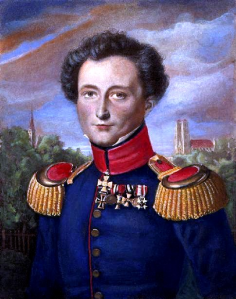
“The very nature of genius is to rise above rules. However, any theory proposing rules not good enough for genius – rules which genius can disregard would conflict with reality, for it would set theory in conflict with genius, and the successful actions of geniuses are part of the reality which theory ought to help us understand and explain.” note B
– Carl Philipp Gottfried von Clausewitz (cca 1820)
However, “one never rises above the rules, if the rules are correct”. note C
The decisions to which a person is lead by genius, will be entirely consistent with correct rules (theory), but theories which exclude genius (i.e. the moral, irrational, immeasurable) from the rule, are reprehensible. Von Clausewitz attempted a definition of genius, posing it to be the application of rules in situations where key data are not apparent. Expanding upon this, one might say genius is recognized as action taken in accordance with an intuitive conceptualization (that is, an unknown or hidden, and thus irrational, mental model), based upon fragmentary evidence. Here neither intuition, nor genius, are taken as being synonymous with ‘rising above the rules’, rather with the extraction of meaning from current patterns, based upon experience, but without necessarily being able to define those patterns.
Here, Herr von Clausewitz suggests subconscious computation – a form of signal processing and information ‘chunking’ that occurs in our minds without our direct awareness. He alludes to the same concept again, saying: “The rules of war, like those of grammar, can be derived inductively. This may provide the ability to reach the right conclusions without the need to learn the rules abstractly or apply them analytically.” Indeed, he has used the word “subrational” to describe a significant component of genius, allowing for a rapid recognition of truth, which the mind would normally miss. The majority of genius, he ascribed to stubbornness, “tremendous determination”, an overcoming of fear and social friction.3
In concord with von Clausewitzian rule breaking, and with Henri Poincaré’s “special aesthetic sensibility”, Miller writes “just as in art, discoveries in science are made by breaking the rules”, and suggests that “in network thinking, concepts from apparently disparate disciplines are combined by proper choice of mental image or metaphor to catalyze the nascent moment of creativity. This necessarily nonlinear thought process can occur unconsciously, and not necessarily in real time.” Miller also reminds us of Poincaré’s description of scientific creativity, as the “the process in which the human mind seems to borrow least from the exterior world, in which it acts, or appears to act, only by itself and on itself.”
An example of a similar phenomenon may be made of not learning by rote (i.e. learning, but not by memorizing through mechanical repetition, not by hearing and repeating aloud, not without full attention to comprehension or thought for the meaning). Poincaré and Einstein both expressed difficulty in memorizing material that had no clear patterns, or was not inducible from first principles (a priori reasoning).
Learning by rote seems to be for those who can not see the truth.
Hereditary genius
Francis Galton, cousin of Charles Darwin, in 1868 published a bestselling Hereditary Genius. Robert Nesbit (1976) has defined Galton’s concept as “a special intellectual and spiritual power that is inherent in a given person’s nature and that transmits itself to succeeding generations through the germ plasm – until or unless, that is, this genealogy becomes corrupted through interbreeding with inferior physical and mental types.”
The meaning here (i.e. a eugenic caste) fascinates as much as frightens me note D because I hold an inexorable faith in free will, and because I closely relate the reality of the human condition to biology generally, and particularly to the sociobiology of certain insects and microbes.
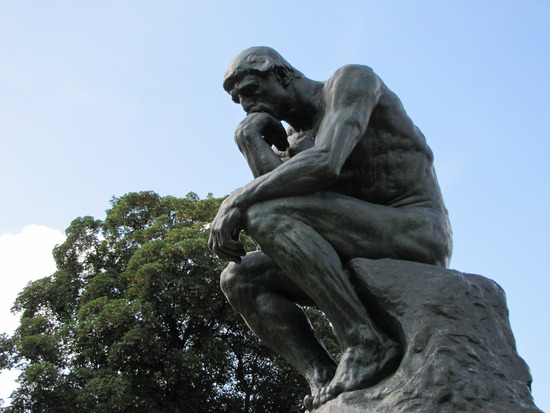
“Capacity for intense and sustained concentration of the mind is also one of the qualities seen oftener in the great than in other people.”
– Nesbit (1976)
Nesbit’s interpretation is one of temporal, rather than hierarchal displacement. He quotes Goethe:
“If a talent is to develop quickly and joyously, it is essential that there be in circulation throughout the scene an abundance of productive genius and of sound culture…. We admire the tragedies of the ancient Greeks, but upon proper examination we should admire the period more than the individual author. [No doubt, there is] the occasional exception, the mind of great creative force. […] This rare individual through reading, fantasy, and sheer imagination creates his own milieu. […] Great ages in the history of culture are made by their great component individuals, but the reverse is also true, that in large degree great individuals are made by great ages and by all the intellectual circuits.”
“The intellectual and moral milieu created by multitudes of self-centered, cultivated personalities was necessary for the evolution of that spirit of intelligence… that formed the motive power of the Renaissance. […] Ages of genius have truth, beauty, and goodness emblazoned on them, not modernism, post-modernism, and futurism.”
Nesbit describes the concept of milieu as a fusion of consciousness with environment.4 More specifically, the meaning of milieu is interpreted as part of the larger environment, that is simultaneously participated in, shaped by, and swept into, the individual’s consciousness. He continues, saying “Every individual above the [intellectual] level of moron is from time to time excited emotionally and intellectually by the people and things around him. It is a fair statement that the highly talented are the most excited in this way, and whether it is a poem or a scientific theory, what we witness is the capacity to internalize a social experience and to make the product socially available. […] Galton did not err in his linking of geniuses by family and genealogy; where he went wrong was in limiting family to physical genealogy rather than seeing it as […] the whole social order – social, cultural, moral, and intellectual entities, as well as a continuity of germ plasm. Heredity, yes, but that word is also properly used when prefaced by the word social.”
Rather than affluence, “a closeness of the generations”, intellectual and moral intimacy between parent and child, a form of apprenticeship, “assimilation of the many psychological and social insights, understandings, skills and techniques”. These, Nesbit posed, are of vital importance in the formation of genius.
“What is true of individuals is also true for peoples. By common assent the three most talented peoples of the past two and a half millenniums have been the Chinese, the Greeks, and the Jews. […] In all three, the family extended itself into all aspects of the individual mind, becoming the nursery of education, moral precept, citizenship, piety, and craft skill.”
There are darker aspects of the familial milieu also. Nesbit lists greed, fratricide, incest, and other evils, and interestingly, argues that “murder is the price to be paid, along with incest, blood feud, and other linked evils, for the uniquely intimate atmosphere of family, and it is, on the evidence of history, a price that should be paid. Better a society in which these specific evils will always exist as the consequence of the family tie than one on which, in order to abolish the evils, the family itself is abolished.”
“One can somehow live with the evils, but civilization could hardly exist without the nurturing ground of its geniuses.”
Bibliography and Notes
note A) Angels are not reported to have been endowed with free will, making them seem rather machinelike. For fear of prosecution, and because I feel the issue has little of significance to offer our current exploration, I shall refrain from commenting on this curious finding.
note B) A similar argument can be made for authority – it is unnecessary to challenge the authority, if the authority is correct.
note C) The meaning of this passage is strikingly similar to that of Gödel’s incompleteness theorems, authored a century later, in 1931.
note D) A good argument might be made for the existence of social castes within our current world population; a topic not explored here.
1) R. Rushdooney, “The Ideas of Genius”, (1972), Chalcedon Report, vol. 78, http://chalcedon.edu/research/articles/the-idea-of-genius/
2) A. Miller, “Insights of Genius”, (2000), MIT press.
3) C. Rogers, “Clausewitz, Genius and the Rules”, (2002), The Journal of Military History, Vol. 66, p. 1167-1176, http://www.jstor.org/stable/3093268
4) R. Nisbet, “Genius”, (1976), The Wilson Quarterly, Vol 6, p. 98 – 107, Woodrow Wilson International Center for Scholars, http://www.jstor.org/stable/40256393
